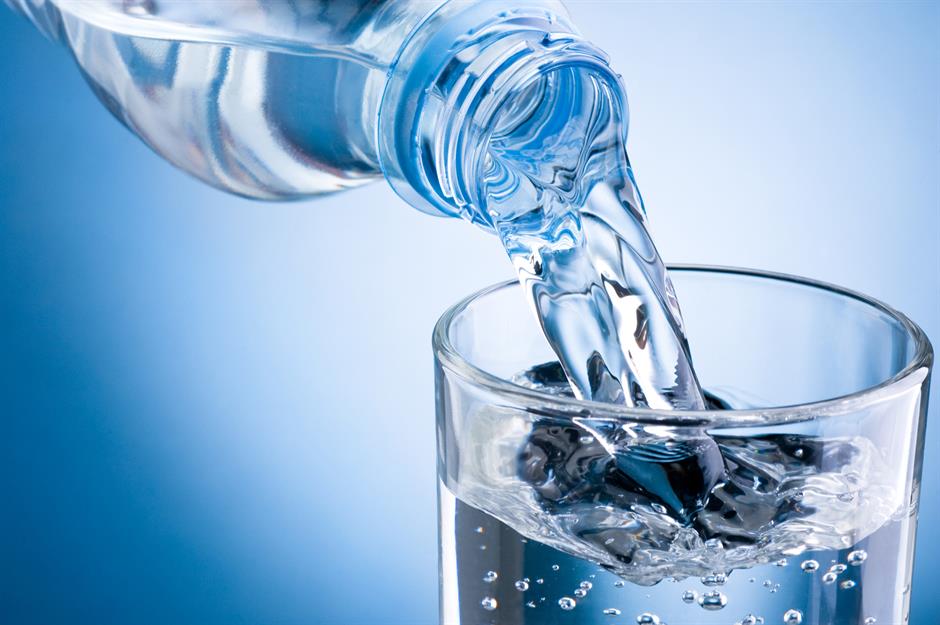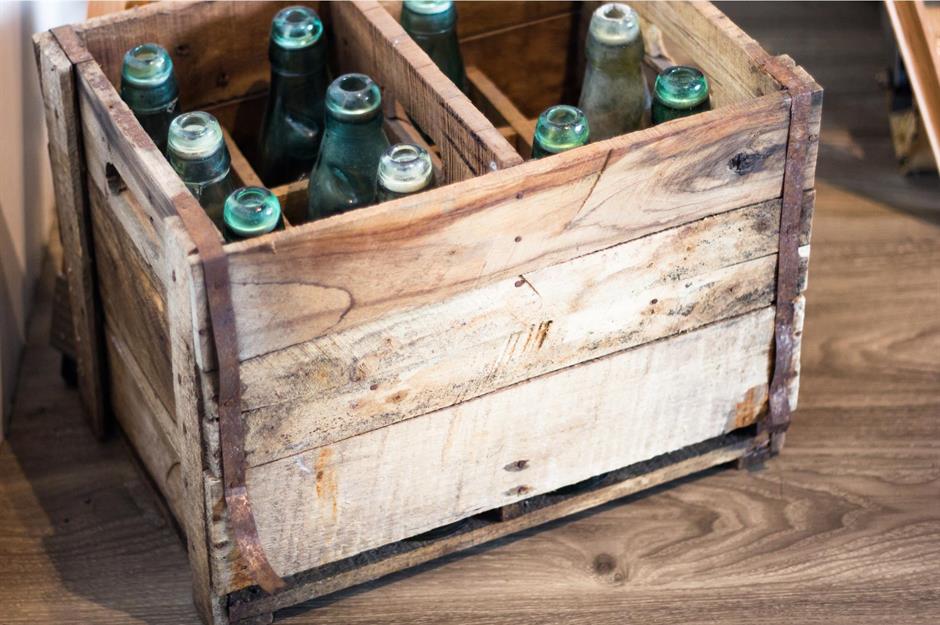Why bottled water is one of the biggest scams of the century
We’re in deep water
Bottled water was first sold in the US in the 1700s
Being able to buy bottled water in America dates back to the 1700s when natural springs were popular. Visitors would drink and bathe in the water as it was believed to cure common ailments. Jackson’s Spa in Boston was one of the first to bottle and sell it, in 1767, so guests could take some back home. Companies in Albany and Saratoga Springs also began packaging and selling water around this time.
Plastic bottles were invented in the 1960s
When high-density polyethylene was introduced in the 1960s, plastic water bottles started to appear. Before then, glass bottles were used. But it was the invention of polyethylene terephthalate (PET) bottles in 1973, which were able to hold fizzy drinks such as Coca-Cola and carbonated water, that took their use to a new level. Lightweight and resistant to damage, they began to replace glass bottles.
Our obsession with bottled water began in the 1970s
Bottled water didn’t really take off in America until 1977, following an estimated $2.5 to $5 million (£2.06-£4.12m) advertising campaign by the French brand Perrier. Before then, tap water was considered perfectly acceptable. Targeted at sophisticated baby boomers, the sparkling water was promoted as a high-status, classy drink with the tagline, “Earth’s First Soft Drink”.
Bottled water is now more popular than soda
In 2016, sales of bottled water overtook soda in America for the first time. The nation consumed 12.43 billion gallons (47.05bn litres) of bottled water compared to 12.41 billion gallons (46.98bn litres) of soda, but the numbers are only increasing. In 2018, America consumed 13.85 billion gallons (52.43bn litres) of water, up 4.9% from the previous year.
Soda companies are the biggest producers of bottled water
It’s not all bad news for soda manufacturers. They’re the biggest producers of bottled water in the world. Coca-Cola owns Dasani, PepsiCo has Aquafina and recently launched LIFEWTR, while Nestlé owns Pure Life, Vittel and Poland Spring among several others.
The global bottled water market is worth around $300 billion (£247.2bn)
Global consumption of bottled water has rocketed during the past five years. The market grew from just under $200 billion (£164.8bn) in 2014 to nearly $300 billion (£247.2bn) in 2019. By 2021 it’s predicted to be worth $350 billion (£288.4bn), following a 10% year on year growth.
A million plastic bottles are bought around the world every minute
That’s roughly 20,000 bottles every second. These mind-blowing figures are thought to be driven by concerns over contaminated water in certain areas, people having more disposable income and on-the-go culture increasing on a global scale.
Weekly sales in America alone could orbit the planet
In 2016 more than 480 billion plastic drinking bottles were sold worldwide. That’s enough to extend more than halfway to the sun if placed end-to-end. In America alone, we drink enough bottled water each week to orbit the planet twice.
Sales will reach half a trillion by 2021
If consumer habits continue in the way they are, environmental campaigners warn the annual sales of plastic bottles will reach half a trillion by 2021.
Bottled water is 300 times more expensive than tap
Around the world, we spend $100 billion (£82.41bn) on bottled water every year. At around $1.22 (£1), your average bottle is 300 times more expensive than tap water, although some calculations suggest it could be even higher. Can you imagine spending 300 times more on anything else – how about $1,590 (£1,310) on a Big Mac or $885 (£729) for a Starbucks tall latte?
Many bottled waters come from the tap
Water companies like to promote their products alongside images of natural springs and ice-topped mountains, but many of them are simply elaborately filtered from the tap. Products previously implicated include Coca-Cola’s Dasani and PepsiCo's Aquafina.
Brands have been forced to come clean
In 2007, PepsiCo updated the label on Aquafina to make it clearer it contained tap water, following pressure from organisations. The previous wording, “Bottled at the source P.W.S” was changed to “The Aquafina in this bottle is purified water that originates from a public water source".
Most of us can’t tell the difference
Think bottled water is a matter of taste? Most people can’t tell the difference, according to various experiments. One of the latest studies was carried out by students at Boston University, who found a third of taste-testers couldn’t identify the tap water sample correctly.
Cleveland proved their tap water is better than Fiji
In 2006, Fiji water sparked outrage in Ohio with a newspaper advert headlined: The label says Fiji because it’s not bottled in Cleveland. The city, unhappy with the inference their water was less superior, tested Fiji water and found it contained 23.89 micrograms of arsenic per gallon (6.31mg per litre). "Before you take a cheap shot at somebody, know what you're talking about" said Cleveland water commissioner J. Christopher Nielson at the time.
Fewer than half the bottles bought in 2016 were recycled
Despite kerbside collections and drop-off centres for recyclables in most neighbourhoods, fewer than half the bottles bought in 2016 were recycled. What happens to the rest? They end up in landfills, strewn across the countryside and in the ocean harming sea life.
Most plastic bottles aren’t made from recycled plastic
While your water bottle says recyclable on it, the top six soft drinks companies aren’t using recycled plastic to make new bottles. In fact, only 6.6% of brands’ packaging is made from recycled material and the rest is virgin plastic.
It takes 450 years for plastic bottles to decompose
Most plastic is generally thought to take at least 450 years to fully biodegrade. But bottles made with polyethylene terephthalate (PET) don’t biodegrade. They are broken into smaller fragments in the ocean by light and end up harming sea life.
A third of the world’s sea turtles have consumed plastic
Greenpeace estimates that 12.7 million tonnes of plastic ends up in our oceans every year. It’s so prevalent that it’s estimated half of the sea turtles in the ocean right now have eaten plastic. Just one piece can kill them. It also makes its way into the food chain, with tiny pieces ending up in the food we’re eating.
Every year 17 million barrels of oil are used in production
To imagine the amount of oil used to produce virgin plastic bottles, picture a bottle filled one quarter of the way with crude oil. In 2006, it was estimated 17 million barrels of oil were needed to meet the demand for bottled water in America alone.
It takes a surprising amount of water to make plastic bottles
Ironically, it takes more water to produce a plastic bottle than what it will carry – with around 1.47 quarts (1.39 litres) needed to produce a 1.06 quart (one litre) bottle. That’s less than what it takes to produce a bottle of soft drink, but still lots for a product you can get from the tap.
Imported brands take even more energy to produce
Even more fuel is burned to transport or ship bottles around the world, but exact figures are hard to estimate as methods and distances vary. Total oil consumption after transportation has been estimated at 50 million unnecessary barrels of oil. This makes it hard to justify drinking Fijian and Alp water when there are perfectly good sources of water in the USA.
PET plastic increases our carbon emissions
The excessive consumption of fossil fuels to make plastic water bottles is one of many contributors to rising carbon emissions, a key cause of climate change. It’s estimated that producing 1 lb (0.45kg) of PET plastic produces 3 lbs (1.36kg) of carbon dioxide.
785 million people don’t have access to clean water
While millions of dollars are unnecessarily spent on bottled water around the globe each year, one in 10 people on the planet don’t have access to clean water at all. That’s a total of 785 million people living without this basic need. Every two minutes a child under five dies without access to clean water.
Read more: 31 genius hacks to make your water taste delicious
San Francisco was the first US city to restrict sales
Throughout America, many cities have taken action to limit the harmful impact plastic water bottles are having on the environment. In 2014, San Francisco became the first city in America to prohibit the sale of bottled water on city-owned land and this year its airport became a plastic water bottle-free zone. Since then, other cities have taken similar action.
Read more: 24 facts you never knew about Coca-Cola
Water bottles are now being banned from colleges
The sale of single-use water bottles has been banned from over 60 college campus dining halls and vending machines across America, with Washington University (pictured) leading the way in 2009. The ban was extended to America’s national parks in 2017, saving up to two million bottles from being discarded, but the initiative was sadly reversed just three months later.
Read more: 25 of the most outrageous soda flavours in the world

